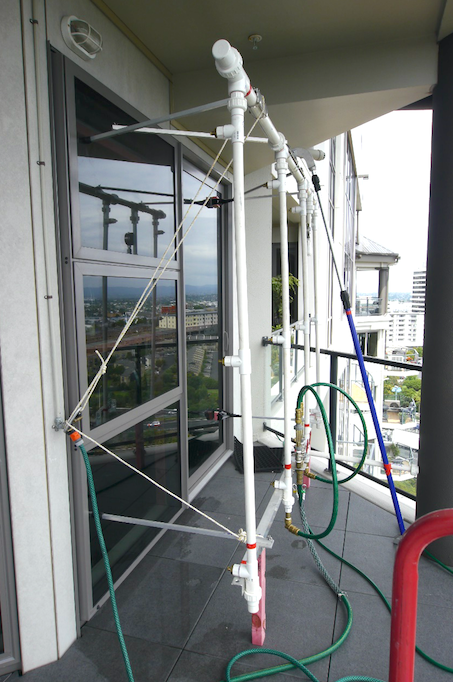Rob Campion of the Window & Glass Association discusses the industry’s soon to be released Field Testing Accreditation Programme, helping to create a better built environment for all.
Introduction
I was once told by someone who should certainly have known better, that “water out the end of a hose is water out the end of a hose regardless of how it’s being used” — which I am not sure is true even when it comes to watering your garden. It’s certainly not true when testing windows and doors.
Whilst the development of our Field Testing Accreditation Programme had begun long before this comment was made, it is this exact premise that started us down the path to begin with.
What is Field Testing?
There are two reasons to Field Test windows and doors:
• For Quality Assurance during the construction phase of the project, to ensure the product being delivered to, and installed on, the site will perform as expected, and
• For forensic purposes once the project has been completed, when trying to establish the possible cause of a failure.
Each of these has a different test method. In fact, there are four tests offered within the Association’s programme, and their correct selection is an important part of being tasked with the test.
To this end, we have included this guide to their selection into the Test Procedures Manual.
The Window & Glass Association Field Tests
There are occasions when the on-site, or field testing, of a window, door or facade element is required to establish weathertightness of the unit and/or its installation.
The Association’s programme was developed in line with widely accepted testing procedures to establish a reputable Field Testing Industry in New Zealand, to provide a structured approach to field testing, and to ensure field testing is performed and reported on consistently, fairly and accurately, using appropriate and calibrated equipment.
If you are familiar with Field Testing, then some of the test numbers might appear familiar.
And for good reason, as each of our tests have been derived from existing international test procedures, but have been modified to suit New Zealand conditions in terms of pressures, water spray and relationship to the Standards the windows were originally tested to.
If you are testing to the AAMA or ASTM Standards then you are essentially creating a new set of test parameters for the window or door that it may not have been exposed to previously, thus given the reasons for testing above, delivering an inappropriate test.
It was recently quoted to me that a majority of windows fail a Field Test. Yet all too often we see tests being selected inappropriately and performed poorly and, as a result, building projects brought to a halt and home owners brought to unnecessary expense.
Testing is a documented, meticulous and repeatable activity, and to avoid unnecessary delays and costs then the test operator must know what they are doing.
To return to the quotation above, too often it is believed that squirting a hose at the window represents realistic “testing” of it.
If that were the case, we could scrap our expensive test facilities and instead invest in a length of Nylex hose and a spray nozzle.
Our Field Testing Programme has been designed to remove these issues, and to bring some structure to the industry, to ensure reliability in the delivered results.
The Programme sets out test methods for determining the water penetration resistance of a representative sampling of all fenestration products, including installed windows, doors, curtainwalls, shopfronts and sloped glazing systems under the simulated conditions determined appropriate for the window and/or building project.
Importantly, all tests are to be performed by an accredited testing facility, with a suitable quality management system, whose scope of accreditation includes the Window & Glass Association Field Testing Procedures, or a Window & Glass Association-accredited test operator.
Next step
The release of the Programme is planned for May, with an update to the current web content, including the current version of the Field Testing Procedures Manual, an outline of the Accreditation Programme, templates for equipment and calibration registers, and a Register of Accredited Field Testers.
If you are interested in becoming an Accredited Field Tester, or have any questions at all, please do not hesitate to contact the Association.




